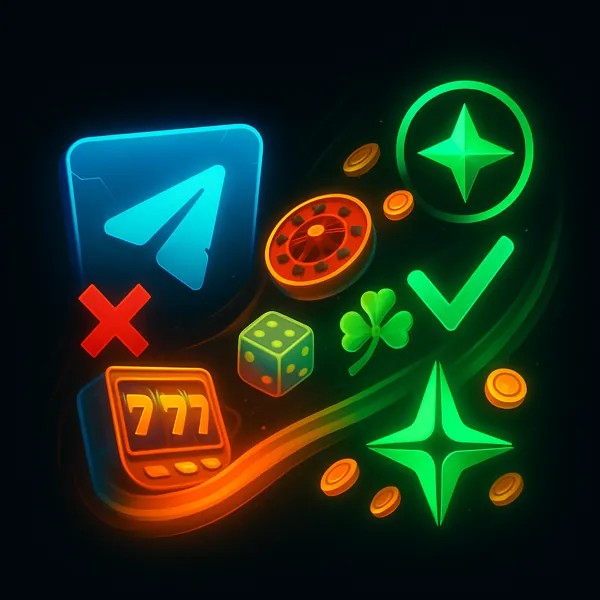Telegram hyped “Mini Apps” as the next big thing for Web3 games. But forcing all devs onto TON killed the multi-chain dream. For gambling, that’s a dealbreaker. Gasless chains like Lumia, Base, or Polygon zkEVM make more sense — and Telegram’s walled garden may end up being just another farming playground, not the casino floor of the future.
The Forced Move to TON
In march 2025, Telegram started forcing all Mini Apps to run exclusively on the TON network.
That killed off Ethereum, Solana, and BNB versions overnight — and left devs no choice but to rebuild or quit.
- TON may be fast, but it’s not gasless for complex dApps.
- The ecosystem is shallow — few liquidity hubs, low on-ramps, and fewer gamblers.
- Devs lose control: you play by Telegram’s rules, not Web3’s open ones.
For gambling protocols, this feels less like decentralization and more like App Store 2.0 — but on-chain.
Why Telegram ≠ Web3 Casino Heaven
On-chain gambling depends on three things:
- Gasless or near-zero friction (users don’t want to sign or pay every bet).
- Cross-chain liquidity (BTC, ETH, BNB, stablecoins).
- Smart abstraction (account abstraction, unified wallets, instant sign-ins).
TON can’t deliver all that. Even if it scales technically, it’s still a single-network silo. Gambling apps need multi-chain bridges and stealth execution — not a forced TON login.
What Devs Are Actually Building
You can already see the shift:
- Most “Telegram Web3 apps” now focus on airdrop farming and point systems (Tap-to-Earn, not Tap-to-Bet).
- Real gambling protocols — Rollbit, Parlay, Polymarket, BC.Game clones — are building native or web-hosted wallets with Telegram as just a login layer or community hub.
- Even wallet-integrated casinos prefer embedded Telegram bots over Mini Apps — they’re faster, gasless, and chain-agnostic.
So while Telegram tries to lock in Web3, the real degen innovation is happening outside its walls.
The Future Is Multi-Chain, Not Mono-Chain
The next generation of Web3 casinos will:
- Run on gasless on chains like Lumia.
- Offer cross-chain liquidity pools for all major tokens.
- Hide the blockchain layer via account abstraction, letting degens just play.
- Use Telegram only for login, chat, or jackpot alerts — not full gameplay.
The real “Web3 casino of the future” will look more like a Steam or Netflix for bets, not a Telegram tab.
Where chains like Lumia Outplays TON
While Telegram locks everything to TON, new gasless chains like Lumia are solving the exact problems that kill on-chain gambling inside Telegram.
Lumia’s architecture lets players:
- Bet gas-free thanks to sponsored transactions and compression.
- Bridge any token (BTC, ETH, BNB, USDT) in seconds — no silos.
- Run smart contracts cross-chain, which means one casino can serve everyone, not just TON users.
- Integrate account abstraction out of the box — players don’t even need to see wallets or gas fees.
That’s why several new prediction and casino projects are already testing Lumia as their core network. It’s fast, invisible, and feels like Web2 with Web3 power underneath — exactly what on-chain gambling needs to go mainstream.
Telegram Lost the Jackpot
Telegram had a golden ticket to dominate Web3 gambling — and burned it. By locking everything to TON, it traded freedom for centralization.
Sure, farmers will stick around, but the real action — the on-chain jackpots, multi-token parlays, and AI-powered prediction games — will move elsewhere.
Telegram didn’t onboard the gambling wave. It fenced it off.
Long live cross-chain degens.


